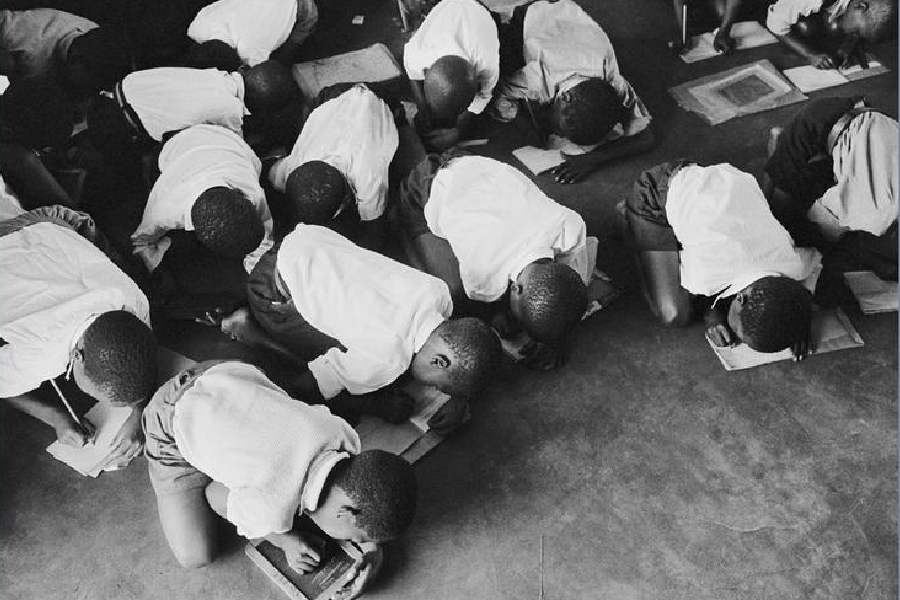Ernest Cole was the first Black photojournalist to document the violence and atrocities of the apartheid regime in South Africa. His works are now on show in Germany.
South African photographer Ernest Cole chronicled the violence and repression of the Black population at great personal risk. He fled South Africa in 1966, managing to smuggle his negatives out of the country in advance. The following year, he published "House of Bondage," a photography book accompanied by his own texts. His work created worldwide awareness for the atrocities of the apartheid system.
Starting June 2, the first major exhibition of Cole's works will be presented by the Deutsche Börse Photography Foundation in collaboration with Magnum Photos at The Cube gallery in Eschborn, near Frankfurt. The exhibition will run until September 17, 2023. The oeuvre of 130 photos is titled after his book.
Cole was born in 1940 in a township near Pretoria. He started working as an assistant to German photographer Jürgen Schadeberg when he was 18. By 1961, he had become a freelance photographer for influential publications in South Africa, portraying the poverty and despair of his people.
Cole was particularly interested in the condition of children who were denied a proper education. Under the Bantu Education Act, it was compulsory for Black children to attend government schools that focused on providing them with skills for manual labor and menial jobs.
As seen in the main photo, the schools were poorly equipped and lacked tables and chairs, forcing students to kneel on the floor and hunch over their books to write. Cole himself was affected by this law, having been a high school student when it was enacted.
Cole also documented the miserable state of public transport for Black people under apartheid. The above photo, taken during rush hour at a train station in Johannesburg, shows people trying to jump onto a moving train, clinging to the doors.
Racial segregation in South Africa existed already in the early 20th century. But when the National Party took office in 1948, they legalized the segregation and called it apartheid, officially depriving the Black population of their political and civil rights.
Repression and discrimination of Black South Africans included regular, warrantless passport checks, as Cole portrayed in this photo. Often the checks were accompanied by humiliating body searches.
The arbitrary humiliation of the Black population was omnipresent in everyday life. They were forbidden to sit on park benches reserved for whites, such as portrayed in the photo below, entitled "Europeans Only."
Decades of activism, international economic pressure and sanctions, as well as the end of the Cold War, led to changes in South Africa's legislation beginning in 1990 and culminated in the end of apartheid and the formation of a democratic government in 1994.
Anti-apartheid activist Nelson Mandela, who spent 27 years in prison, became the country's first Black president. Unfortunately, the changes came a few years too late for Cole to witness. He died in New York in 1990, succumbing to pancreatic cancer at the age of 49.










